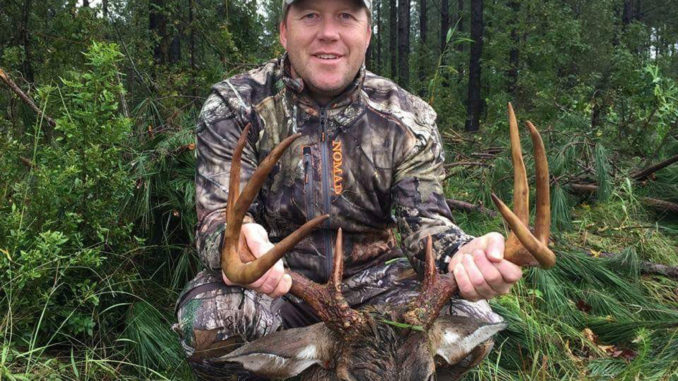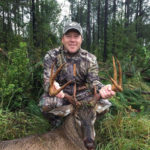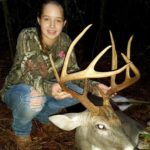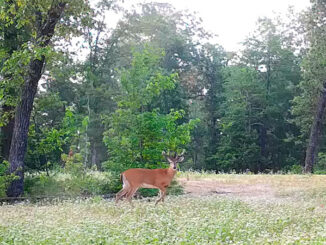
Let small bucks walk, recognize the old ones, and pump the minerals to all of them, and trophy hunting can be a real possibility in the Carolinas.
When most hunters think about truly monster whitetail bucks, midwestern states and Canadian provinces typically come to mind. No doubt, Illinois, Ohio and Saskatchewan consistently produce heavy-hoofed beasts with a chandelier full of antler, but hunters in the Carolinas don’t have to buy a plane ticket and travel across the continent to get a shot at the trophy of a lifetime, either. The home dirt produces its fair share of wall hangers, and with the right formula, bucks can reach their potential.
North Carolina’s all-time biggest typical buck was a 181 7/8-inch monster killed in Guilford County by Terry Daffron, and more than 300 typical bucks have been killed that measure more than 173 inches — 90 percent of the minimum score required for entry into the Boone & Crockett Club’s all-time record book. South Carolina has more than 100 bucks in its record books that measured between 154 inches and the state-record 176-inch buck killed in Pickens County by Wyatt Williams.
What does it take to grow and harvest a heavy-horned beast in North Carolina or South Carolina? In the Tarheel State, Butner’s Anthony Richard is doing something right and has plenty to show for it, having taken a handful of trophy bucks over the past decade on his Granville County land.
“The No. 1 way to produce a big buck is age. You must let the small bucks walk, giving them time to grow to maturity,” says Richard. “If you want to target bucks over 130 inches, you will be looking for deer 4 1/2 years old.”
Typically, deer have a short lifespan, and most bucks rarely make it past their second or third birthdays. Hunting pressure on young bucks and their premature harvest cripples trophy opportunities. Some bucks lack the potential to make it into the record book at any age, but some bucks can make it at a young age.
“Occasionally, a 3 1/2-year-old buck with superior genetics and a rich diet can produce 130 inches, but imagine what he’ll be at 4 1/2?” Richard asked.
Allowing bucks to grow to maturity rarely causes issues on property being managed for big bucks. Of course, there are exceptions to that rule. Not every buck has the genetic capacity to produce a massive set of antlers. In fact, many bucks need to be eliminated from the herd well before their third birthdays.
Grier “Cuz” Copeland is manager and caretaker for White Oak Hunting Club in Williamsburg County, S.C. On the 5,000 acres the club is managing, members take two or three bucks every season that qualify for the South Carolina record book: a minimum of 125 typical inches. For Copeland, the removal of inferior or “cull” bucks is one of his driving forces to produce quality, high-scoring animals.
“Mature bucks rule the territory and will bully any younger bucks around, including the younger 8- and 10-pointers with excellent trophy potential,” Copeland said. “Mature bucks need to be shot, especially when they only have six and seven points.”
If hunters allow mature but inferior bucks to rule the roost, the future buck potential for their area will be based on the deer that are breeding all of the does and passing on their genetic traits. Hunters should always bee on the lookout to shoot mature bucks and be leery of any older bucks in the area with a less-than-perfect set of headgear.
Beyond harvesting strategies that manipulate the gene pool, big bucks are a product of what they eat. In areas with protein and mineral-rich groceries, deer are healthier and have the capacity to grow larger antlers.
Copeland, for example, has 1,250 acres at White Oak that are planted annually in corn, soybeans and peanuts — and the peanuts are his golden ticket.
“Peanuts are growing the big bucks around here. There is nothing you can plant that they like better or that is any better for them,” he said.
Hunting knee deep in the South’s prime agricultural belt will bring hunters closer to a trophy buck and keep the herd healthy. However, having plenty of food will also encourage a rise in the overall carrying capacity of the land. The more nutritious food available will feed more deer, and that brings the harvest back into the equation to produce big bucks.
“We kill from 60 to 80 does per year on our leases, but we only shoot them on the farms that need a reduction to keep the herd healthy,” said Copeland, who relies on tracks, food consumption and surveillance from 25 trail cameras said.
They target does for harvest on specific areas of the property where the deer population is high. And they leave the does alone on properties with stable or less populated zones.
In order to determine what areas need the reduction, Copeland will rely on tracks, food consumption, and surveillance from his 25 trail cameras to judge the size of the herd and locate and pattern big bucks on his properties.
Richard swears by trail cameras and incorporates them into his everyday management regime.
“Finding a trophy-size buck is the biggest challenge unless you have been watching the herd for several years and have been keeping up with the up-and-comers,” Richard said. “The cameras don’t sleep, stink or disrupt movement of the deer, as long as you are careful with your scent and limit checking your (cameras).”
Growing trophy bucks is much more than planting a food plot and blowing the newest and greatest grunt call. It takes years to establish and maintain a big buck factory in the Carolinas. But with a little time and strategic decisions, a trophy buck can become part of any hunters season reward.







Be the first to comment